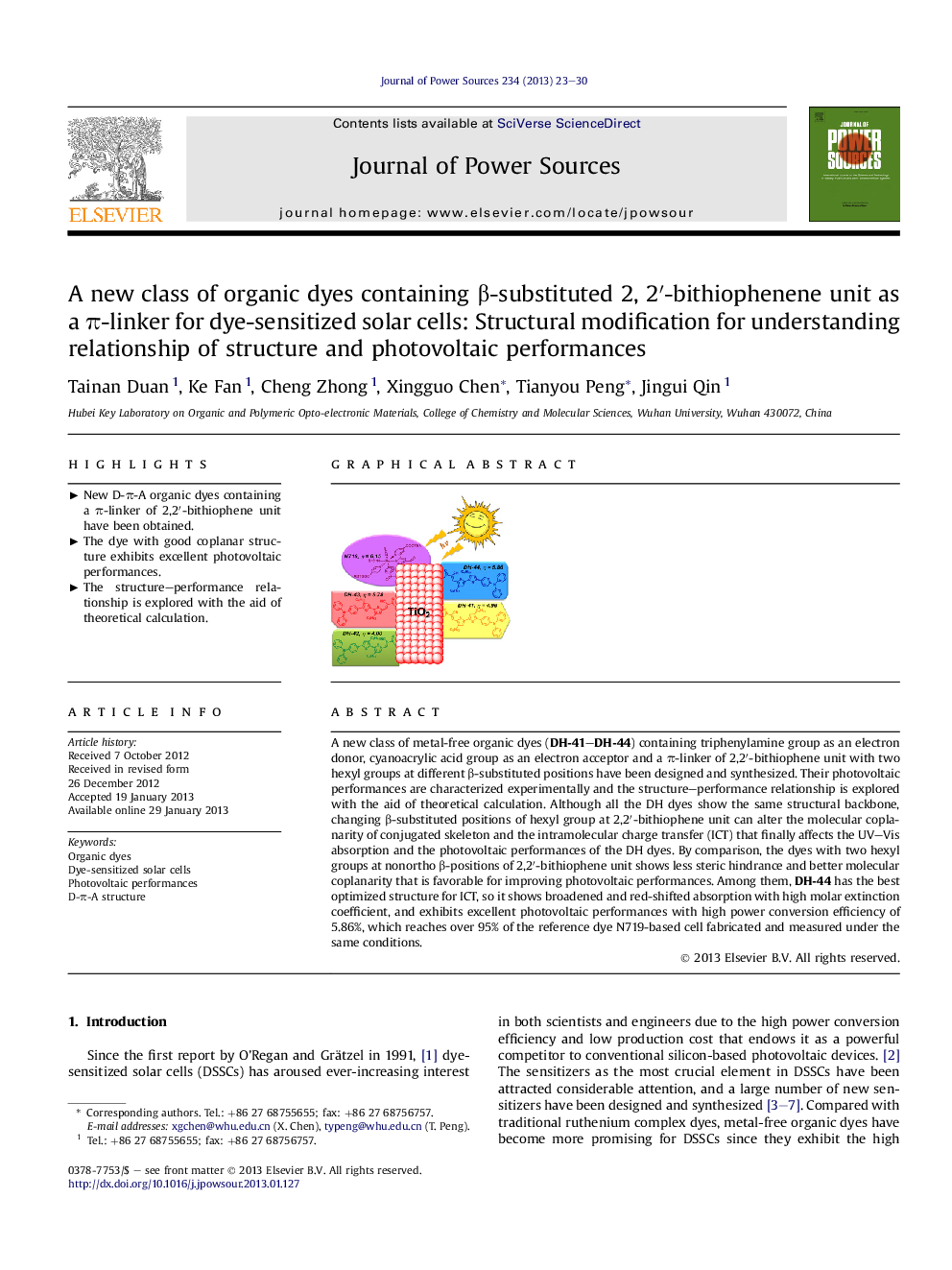| Article ID | Journal | Published Year | Pages | File Type |
|---|---|---|---|---|
| 1287970 | Journal of Power Sources | 2013 | 8 Pages |
A new class of metal-free organic dyes (DH-41–DH-44) containing triphenylamine group as an electron donor, cyanoacrylic acid group as an electron acceptor and a π-linker of 2,2′-bithiophene unit with two hexyl groups at different β-substituted positions have been designed and synthesized. Their photovoltaic performances are characterized experimentally and the structure–performance relationship is explored with the aid of theoretical calculation. Although all the DH dyes show the same structural backbone, changing β-substituted positions of hexyl group at 2,2′-bithiophene unit can alter the molecular coplanarity of conjugated skeleton and the intramolecular charge transfer (ICT) that finally affects the UV–Vis absorption and the photovoltaic performances of the DH dyes. By comparison, the dyes with two hexyl groups at nonortho β-positions of 2,2′-bithiophene unit shows less steric hindrance and better molecular coplanarity that is favorable for improving photovoltaic performances. Among them, DH-44 has the best optimized structure for ICT, so it shows broadened and red-shifted absorption with high molar extinction coefficient, and exhibits excellent photovoltaic performances with high power conversion efficiency of 5.86%, which reaches over 95% of the reference dye N719-based cell fabricated and measured under the same conditions.
Graphical abstractNew class of D-π-A structural organic dyes containing a π-linker of 2,2′-bithiophene unit with two hexyl groups at different β-substituted positions have been designed and synthesized. Their photovoltaic performances are characterized experimentally and the structure–performance relationship is explored with the aid of theoretical calculation.Figure optionsDownload full-size imageDownload as PowerPoint slideHighlights► New D-π-A organic dyes containing a π-linker of 2,2′-bithiophene unit have been obtained. ► The dye with good coplanar structure exhibits excellent photovoltaic performances. ► The structure–performance relationship is explored with the aid of theoretical calculation.
